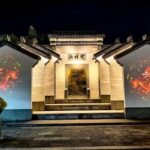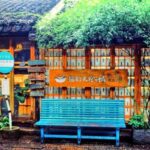The “Saint of Tea,” Lu Yu from the Tang Dynasty, was renowned for his discernment in the art of tea. He tasted 20 types of spring water from across the land, and deemed the water from the Kangle Spring in Lushan’s Kangwang Valley as the finest. The Xinquan Spring in Wuxi’s Huishan was ranked second best by him. Following in his footsteps, Liu Boshu, another connoisseur, once stated, “There are seven types of water suitable for making tea: the Zhongling Spring in the Yangtze River is the first, Huishan Spring is the second, and the Huqiu Spring is the third…” Both Lu Yu and Liu Boshu, in their capacity as tea connoisseurs, ranked the Huishan Spring as second, highlighting its exceptional quality.
Since then, celebrities from every dynasty have visited and appreciated the Huishan Spring. The Tang Dynasty poet Li Shen referred to it as the “spiritual liquid of the world.” Emperor Huizong of the Song Dynasty inscribed “the source of living water” and praised it as a tribute product, with a hundred jars entering the palace every month. Su Dongpo, who admired its fame, tasted the spring water multiple times and penned the poem, “Alone, I bring the small round moon from the sky, to try the second best spring in the world.” The famous Ming Dynasty painter Wen Zhengming, during a tea gathering with friends at Huishan, was inspired to create the precious scroll, “Ming Wen Zhengming Huishan Tea Gathering Scroll,” which is now treasured in the Palace Museum.
However, the fame of Huishan Spring extends beyond the water itself. Every autumn, on the fifteenth day of the lunar month, a bright moon is reflected in the pool, creating a phenomenon known as the “Two Springs Reflecting the Moon.”Ah Bing, a modern blind musician, crafted the renowned piece “Erquan Yingyue,” which captures the boundless yearning for a beautiful life. This composition gained significant recognition in 1985 when it was recorded in the United States, emerging as the most beloved among the eleven Chinese pieces played nationwide. It has since been embraced as a piece of Chinese music by the United States. The allure of “Erquan Yingyue” is so profound that the renowned Japanese conductor Seiji Ozawa once remarked, “This song must be listened to on one’s knees.”
The springs are accessible all year round, with the site being open throughout the day. A must-see tip for visitors is the remarkable surface tension of the spring water. When filled to the brim in a cup, the water bulges high without spilling, a truly astonishing sight.









